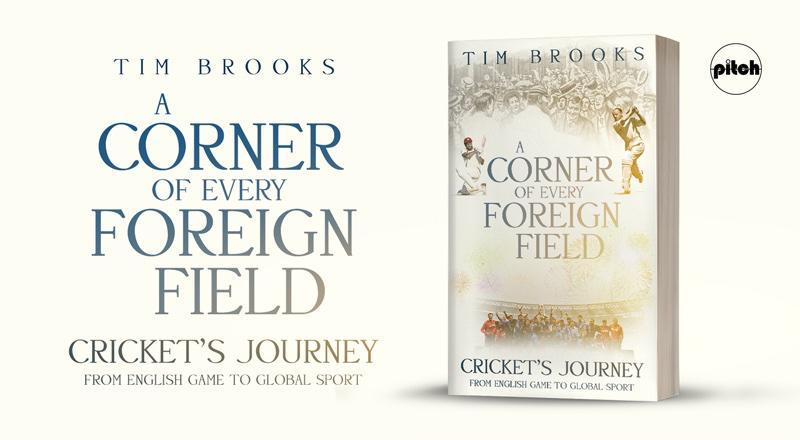Although culturally very distinct, continental Europe was also within the orbit of the ECB and those that shared a North Sea coast were so close geographically that they could watch cricket on the BBC. The availability of free to air cricket was a significant factor in the growth of the sport in the Netherlands in the seventies and eighties.
Participation levels increased steadily to a peak of around 8,000 players, becoming more inclusive and socially diverse. An established club culture certainly helped and the best players began to interest English counties. Seam bowler Paul-Jan Bakker was the first, joining Hampshire, and others followed in his stead including Somerset and Glamorgan all-rounder Roland Lefebvre and the legendarily quick Somerset paceman Andre Van Troost.
Van Troost, though at times erratic, is often cited by county players of the era as the quickest they faced. Such was the power with which he drove through his delivery stride he reportedly once broke his knuckles on the ground on his follow-through. On the back of his accomplished performances in the 1996 World Cup, batsman Bas Zuiderent played a few seasons for Sussex.
The ECB invited the Netherlands to join their domestic one-day tournament in 1995, giving the team high-quality opposition and the players a shop window. With no regular international fixtures for Associates it also gave the national team a few fixtures between ICC Trophies.
Denmark were also invited into the Sunday League, offering county cricket fans the exciting prospect of away games in Copenhagen They too had stars who broke into the English professional game with pace bowler Ole Mortensen a fans’ favourite at Derbyshire for many years.
This regional development model could also be seen in Southern Africa where Namibia, who became an Associate in 1992, were incorporated into South African domestic competition. Players in Papua New Guinea could turn the dial and enjoy the delights of Channel 9 commentary.
In 1998 the football World Cup went back to its origins for its 16th edition and was hosted by France A record 174 countries had embarked upon qualification, demonstrating the unparalleled global reach of football compared to rival sports. FIFA had been actively courting new markets and would have been delighted that Japan and Jamaica qualified for the first time. The sublime skills of host hero Zinedine Zidane were beamed to 200 countries. The next tournament would be hosted by Japan and Korea, part of a strategy to conquer Asia.
Football had broken the USA in 1994 when the World Cup was held in Los Angeles with sponsorship revenue for the final eclipsing the profits from the Super Bowl. This laid the platform for the growth of the American Major League Soccer that would later lure David Beckham over the Atlantic.
Football had embraced the opportunities of satellite television, providing a balance in most markets between access on free to air and ever-lucrative contracts for live matches on premium channels. This increased revenue, that could then be invested in developing further markets. It was a commercial juggernaut that looked unstoppable.
Unlike cricket the game at club level was growing in business potential year on year, with clubs like Manchester United becoming global brands at the birth of the new millennium. They didn’t just host a match in Manchester, they served a global fan base. A few years into the noughties Manchester United opened a training camp in Goa. India was perhaps the one market, alongside China, where football had struggled Cricket looked over its shoulder anxiously, with Jamaica playing World Cup football and India being courted.
Rugby union had professionalised in 1995 after years of fending off lures from rugby league for its best players. This enabled the sport to fully capitalise on the opportunities of the entertainment age and the World Cup in South Africa in 1995, featuring an emotional Nelson Mandela and a country visibly uniting around sport, was a breakthrough and announced rugby as a major modern sport. While remaining in the shadow of football, rugby generated interest from major broadcasters and won lucrative contracts.
At club level regional tournaments like the Heineken Cup provided high-quality events to complement international schedules. The International Rugby Board were actively looking at global expansion, with Argentina and Italy breaking through as major teams In sevens they had a traditional, shorter format that was naturally suited to emerging nations and festival atmospheres.
US-focused sports such as basketball and baseball were past masters at monetising their brands and had expansion plans of their own. Not to mention motor sport, where F1 had an eye on lucrative new markets, too.
Where did cricket stand in this increasingly competitive sports entertainment age on the verge of a new millennium? Well, cricket was noticeably different in several significant ways. Firstly, the money and profile were all invested in the international game. Club sides, though many had a rich heritage, just fed international cricket and had virtually no presence commercially. Certainly not in comparison with Champions League sides. This put power in national boards rather than club chairmen. The lure of unprecedented profits saw members jostle for decision-making power in the global game, exposing the antiquated and desperately inadequate governance structure of the ICC Cricket had stumbled upon new-found wealth, making its members more financially stable and its World Cup hosts extremely wealthy.
But there was no strategy. International teams played each other if they mutually agreed to. It was as simple as that.
An excerpt from A Corner of Every Foreign Field: Cricket’s Journey from English Game to Global Sport, by Tim Brooks. Worthing, Sussex: Pitch Publishing, 2020. Available on Amazon.
You’re reading Emerging Cricket — brought to you by a passionate group of volunteers with a vision for cricket to be a truly global sport, and a mission to inspire passion to grow the game.
Be sure to check out our homepage for all the latest news, please subscribe for regular updates, and follow EC on Twitter, Facebook, LinkedIn and YouTube.
Don’t know where to start? Check out our features list, country profiles, and subscribe to our podcast.
Support us from US$2 a month — and get exclusive benefits, by becoming an EC Patron.







